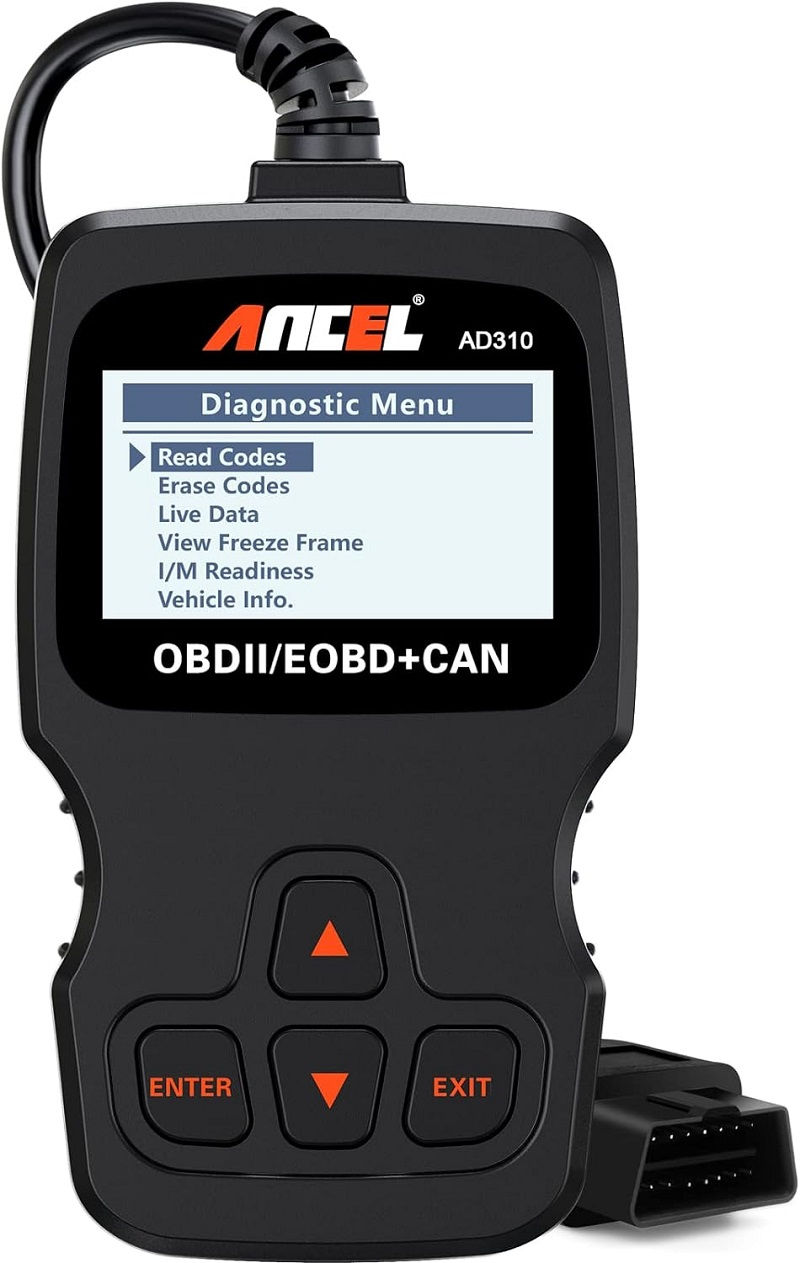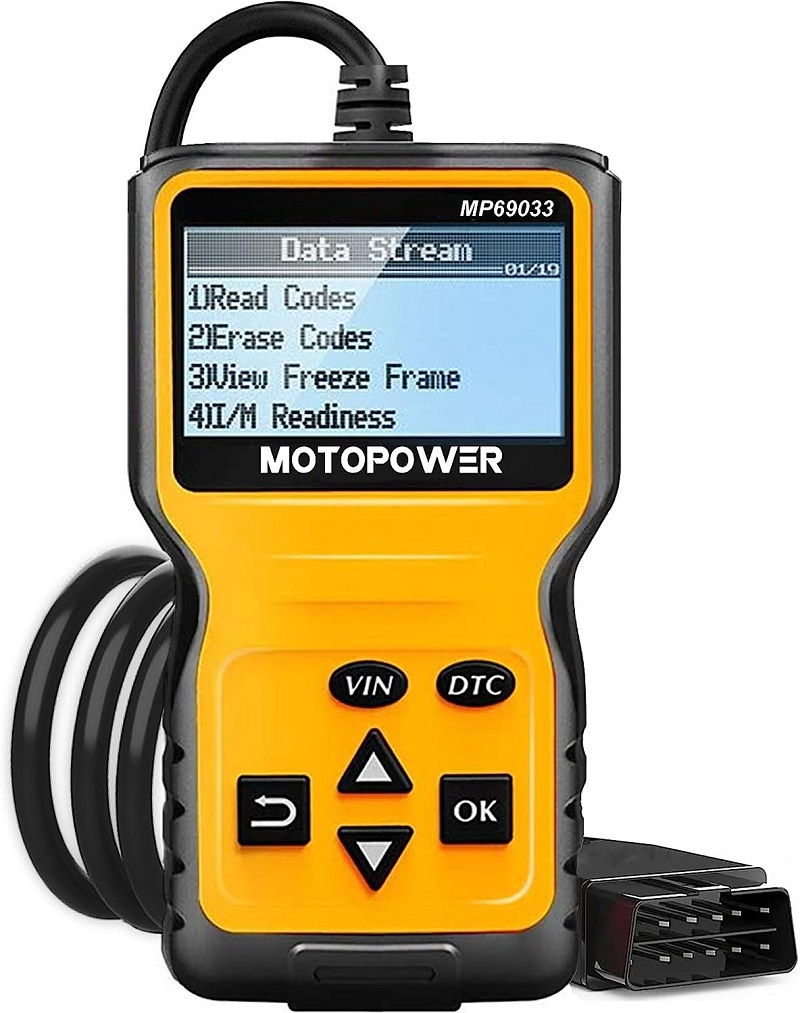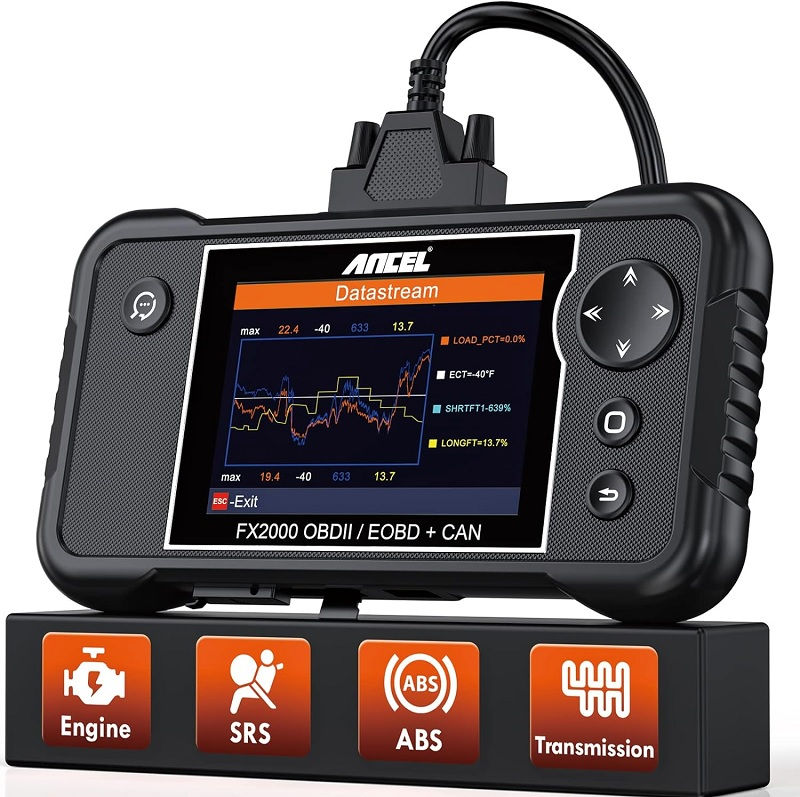This post contains affiliate links. This means I will make a commission at no extra cost to you should you click through and make a purchase [ “As an Amazon Associate, I earn from qualifying purchases.” ]. Read the full disclosure here.
Check Engine Light Scanner GuideMechanic.Com In today’s modern cars, the check engine light is a common sight. It can be frustrating when this light suddenly appears on your dashboard, leaving you wondering what could be wrong with your vehicle.
Fortunately, check engine light scanners are here to help. In this comprehensive guide, we will dive deep into the world of check engine light scanners, explaining what they are, how they work, and why they are essential for every car owner.
Whether you are a seasoned mechanic or a car enthusiast, understanding the ins and outs of check engine light scanners is crucial.
With this knowledge, you can diagnose and resolve issues promptly, saving you time, money, and potentially preventing further damage to your vehicle.
What is a Check Engine Light Scanner?
Check out this ANCEL AD310 Classic Enhanced Universal OBD II Scanner Car Engine Fault Code Reader CAN Diagnostic Scan Tool-Black

At its core, a check engine light scanner is a diagnostic tool designed to retrieve and interpret diagnostic trouble codes (DTCs) from your vehicle’s onboard computer system.
These codes, often triggered when a component or system in your vehicle malfunctions, provide valuable information about the issue at hand.
See Also: Toyota Camry Dashboard Lights
Check engine light scanners come in various forms, from handheld devices to smartphone apps, and are designed to be user-friendly, making them accessible to both professionals and car owners.
Check Engine Light Scanner Features:
- Compatibility with different vehicle makes and models
- Clear, easy-to-read display
- Ability to retrieve both generic and manufacturer-specific codes
- Real-time data display
- Ability to reset the check engine light
How Does a Check Engine Light Scanner Work?
Check engine light scanners work by establishing a connection with your vehicle’s onboard computer system, accessing the data stored within it.
The most common communication protocol used by scanners is OBD-II (On-Board Diagnostics II), which became standardized in the mid-1990s.
OBD-II systems provide access to a vast array of information, including DTCs, sensor data, and vehicle performance metrics.
Establishing Communication with the Vehicle
When you connect a check engine light scanner to your vehicle, it sends a request to establish communication.
The scanner and the vehicle’s onboard computer exchange signals, allowing them to communicate effectively.
Once the communication link is established, the scanner can retrieve the relevant data from the vehicle’s computer system.
Retrieving Diagnostic Trouble Codes (DTCs)
Diagnostic Trouble Codes (DTCs) are alphanumeric codes that indicate specific issues detected by your vehicle’s onboard computer system.
These codes are stored in the vehicle’s memory and can be accessed by a check engine light scanner. When you run a scan, the scanner retrieves these codes, which serve as a starting point for identifying the problem.
Interpreting Diagnostic Trouble Codes (DTCs)
Interpreting the retrieved DTCs is a crucial step in the diagnostic process. Each code corresponds to a specific issue or malfunction in your vehicle’s systems or components. You can refer to a code database or consult with a professional to decipher the meaning of the codes.
This information provides insight into the underlying problem, helping you make informed decisions regarding repairs or maintenance.
Understanding Check Engine Light Codes

Check engine light codes, also known as diagnostic trouble codes (DTCs), are alphanumeric codes that indicate specific problems or malfunctions in your vehicle’s systems or components.
See Also: Volkswagen Dashboard Symbols
These codes are standardized across all vehicles using the OBD-II protocol, ensuring compatibility and ease of interpretation.
Types of Check Engine Light Codes
Check engine light codes can be classified into two main types: generic and manufacturer-specific codes. Generic codes are standardized and common across all vehicles, while manufacturer-specific codes are unique to specific car manufacturers.
Both types of codes provide valuable information about the issue at hand, but manufacturer-specific codes may offer more precise details and diagnostics.
Interpreting Check Engine Light Codes
Interpreting check engine light codes involves understanding the alphanumeric combination that represents a specific issue. Each code consists of a letter followed by four digits.
The letter indicates the system or area of the vehicle where the problem originates, while the digits provide further details about the issue.
For example, a code starting with “P” indicates a powertrain issue, while a code starting with “B” points to a body-related problem.
Benefits of Using a Check Engine Light Scanner
Using a check engine light scanner offers numerous benefits for both car owners and professionals. By investing in this diagnostic tool, you gain access to invaluable information about your vehicle’s health and performance, enabling you to take timely action. Here are some of the key benefits of using a check engine light scanner:
Early Detection of Issues
Check engine light scanners allow for the early detection of potential problems in your vehicle. By identifying issues at their initial stages, you can address them promptly, preventing further damage and costly repairs down the line.
Cost Savings
By diagnosing and resolving issues yourself, you can save money on unnecessary visits to the mechanic. Check engine light scanners provide you with the information needed to determine if a problem can be fixed with a simple DIY solution or if professional assistance is required.
Empowerment and Knowledge
Using a check engine light scanner empowers you with knowledge about your vehicle’s performance and health.
It enables you to make informed decisions regarding maintenance, repairs, and upgrades, giving you more control over your automotive experience.
Convenience and Time Savings
Check engine light scanners provide a convenient way to diagnose and troubleshoot issues without having to schedule an appointment with a mechanic. This saves you time and allows you to address minor problems swiftly, minimizing vehicle downtime.
How to Choose the Right Check Engine Light Scanner
Choosing the right check engine light scanner can be overwhelming, given the wide range of options available in the market. To ensure you make an informed decision, consider the following factors:
Compatibility
Ensure that the scanner you choose is compatible with your vehicle’s make, model, and year. Some scanners offer broader compatibility, while others are designed for specific manufacturers or vehicle types.
Features and Functionality
Consider the features and functionality you require from a check engine light scanner. Some scanners offer basic code reading capabilities, while others provide additional features such as real-time data display, graphing, and sensor monitoring. Assess your needs and choose a scanner that aligns with your requirements.
User-Friendliness
Look for a scanner that is user-friendly and easy to navigate. Clear and intuitive displays, along with simple control interfaces, will enhance your overall scanning experience.
Price Range
Set a budget for your check engine light scanner purchase. Scanners vary in price, with basic models being more affordable and advanced ones with additional features carrying a higher price tag. Determine your budget and choose a scanner that offers the best value for your money.
Step-by-Step Guide to Using a Check Engine Light Scanner
Using a check engine light scanner may seem intimidating at first, but it is a relatively straightforward process. By following these step-by-step instructions, you can effectively use a scanner to diagnose and troubleshoot issues:
Step 1: Locate the Diagnostic Port
The first step is to locate the diagnostic port in your vehicle. This port is typically found under the dashboard on the driver’s side. Refer to your vehicle’s manual if you are unsure about its exact location.
Step 2: Connect the Scanner
Connect the check engine light scanner to the diagnostic port. Ensure that the connection is secure to establish proper communication with your vehicle’s onboard computer system.
Step 3: Turn on the Ignition
Turn on the vehicle’s ignition without starting the engine. This will power up the onboard computer system and allow the scanner to establish a connection.
Step 4: Run a Scan
Once the scanner is connected and the ignition is on, follow the instructions provided by the scanner’s manufacturer to run a scan. This typically involves selecting the appropriate menu options on the scanner’s display.
Step 5: Retrieve and Interpret Codes
After running the scan, the scanner will retrieve the diagnostic trouble codes (DTCs) from your vehicle’s computer system.
See Also: Kia Sportage Dashboard Symbols
Write down the codes or use the scanner’s built-in code database to interpret their meanings. This will provide you with insight into the specific issues affecting your vehicle.
Step 6: Determine the Next Steps
Once you have the DTCs and their meanings, you can determine the appropriate next steps. Depending on the severity of the issues and your mechanical skills, you can decide whether to address the problems yourself or seek professional assistance.
Common Misconceptions about Check Engine Light Scanners

There are several misconceptions surrounding check engine light scanners that can lead to confusion and misinformation.
By debunking these myths, we can ensure a clearer understanding of the capabilities and limitations of these diagnostic tools:
Myth: Check Engine Light Scanners Damage the Vehicle’s Computer System
One common misconception is that using a check engine light scanner can cause damage to your vehicle’s computer system.
In reality, these scanners are designed to communicate with the onboard computer system using the OBD-II protocol, which is standardized and safe.
As long as you use a reputable and compatible scanner, there is no risk of damaging your vehicle’s computer system.
Myth: Only Professionals Can Use Check Engine Light Scanners
Another misconception is that check engine light scanners are complicated tools that can only be used by professionals. In truth, many scanners on the market are designed with user-friendliness in mind.
They come with clear instructions and intuitive interfaces that make them accessible to car owners of all skill levels.
With a bit of guidance and familiarization, anyone can effectively use a check engine light scanner to diagnose and address issues.
Myth: Check Engine Light Scanners Fix the Problem
While check engine light scanners provide valuable information about the issues affecting your vehicle, they do not fix the problem on their own.
These scanners serve as diagnostic tools, helping you identify the underlying cause of the check engine light.
Once you have the trouble codes, you still need to address the problem by either performing the necessary repairs yourself or seeking professional assistance.
Troubleshooting Common Check Engine Light Codes
Check engine light codes can be indicative of a wide range of issues. By understanding some of the common codes and their potential causes, you can troubleshoot and address problems more effectively. Here are a few examples:
P0016 – Crankshaft Position – Camshaft Position Correlation (Bank 1 Sensor A)
This code indicates a problem with the correlation between the crankshaft position sensor and the camshaft position sensor in Bank 1, Sensor A.
See Also: O2 Sensor Check Engine Light
The potential causes for this code can include a faulty sensor, a timing chain issue, or an electrical problem.
To troubleshoot this code, you may need to inspect and test the sensors, check the timing chain for proper alignment, and ensure there are no wiring or connection issues.
P0171 – System Too Lean (Bank 1)
A P0171 code suggests that the air-fuel mixture in Bank 1 is too lean. This could be due to a vacuum leak, a faulty oxygen sensor, a clogged fuel injector, or a problem with the mass airflow sensor.
To address this code, you may need to inspect the vacuum lines for leaks, test the oxygen sensor, clean or replace the fuel injector, or check the mass airflow sensor for proper operation.
P0300 – Random/Multiple Cylinder Misfire Detected
A P0300 code indicates that the engine is experiencing random or multiple cylinder misfires. This can be caused by various factors, such as faulty spark plugs, a malfunctioning ignition coil, a clogged fuel injector, or a vacuum leak.
To troubleshoot this code, you may need to inspect and replace the spark plugs, test the ignition coils, clean or replace the fuel injectors, and check for any vacuum leaks.
Maintaining Your Vehicle with a Check Engine Light Scanner
Check engine light scanners are not just useful for diagnosing and addressing issues; they can also play a role in proactive vehicle maintenance. Here’s how you can use a check engine light scanner to maintain your vehicle’s overall health:
Regular Scans for Preventive Maintenance
Performing regular scans with a check engine light scanner can help you identify potential issues before they escalate.
By catching problems early on, you can take preventive measures to address them, preventing more significant damage and costly repairs.
Set a schedule for regular scans, even if the check engine light is not illuminated, to stay on top of your vehicle’s health.
Monitoring System Health and Sensor Readings
A check engine light scanner can provide real-time data and readings from various sensors in your vehicle.
Monitoring these readings can give you insight into the performance of different systems, such as the engine, transmission, and emissions.
By keeping an eye on these readings, you can detect any abnormal patterns or fluctuations that may indicate a potential problem.
Clearing the Check Engine Light
After resolving an issue detected by the check engine light scanner, you can use the scanner to clear the check engine light. This is especially useful if the issue has been successfully addressed and no longer poses a problem.
Clearing the light ensures that it does not continue to illuminate unnecessarily and helps you differentiate between resolved issues and new problems that may arise.
The Future of Check Engine Light Scanners
The field of check engine light scanners is continuously evolving, with advancements and innovations shaping the future of these diagnostic tools. Here are some potential developments we may see in the coming years:
Wireless Connectivity
As technology progresses, check engine light scanners may become more wireless. This could involve the use of Bluetooth or Wi-Fi connectivity, eliminating the need for physical connections to the vehicle’s diagnostic port. Wireless scanners would offer greater convenience and ease of use.
Enhanced Diagnostic Capabilities
Future check engine light scanners may offer even more comprehensive diagnostic capabilities. This could include advanced sensor monitoring, predictive maintenance features, and the ability to detect and interpret more complex codes and data. With these enhancements, diagnosing issues would become even more accurate and efficient.
Integration with Mobile Devices and Smart Systems
As smartphones and smart systems continue to be an integral part of our lives, check engine light scanners may become seamlessly integrated with these devices.
This would allow for more intuitive and user-friendly interfaces, enhanced data visualization, and the ability to access diagnostic information on the go.
Artificial Intelligence and Machine Learning
The integration of artificial intelligence and machine learning algorithms could revolutionize check engine light scanners.
By analyzing vast amounts of data, these systems could provide more accurate diagnostics, offer predictive maintenance recommendations, and even suggest potential solutions based on previous patterns and experiences.
In conclusion, check engine light scanners are valuable tools that provide car owners and professionals with the ability to diagnose and address issues promptly.
By understanding the inner workings of these scanners and the information they provide, you can take control of your vehicle’s maintenance and make informed decisions.
With the future advancements on the horizon, check engine light scanners will continue to play a vital role in ensuring the health and performance of our vehicles.
See Also: Airbag Warning Light Meaning
Related video of Everything You Need to Know About Check Engine Light Scanners
- New Lifted Diesel Trucks for Sale - December 19, 2025
- Old Lifted Diesel Trucks for Sale - December 18, 2025
- Big Lifted Diesel Trucks for Sale - December 17, 2025
